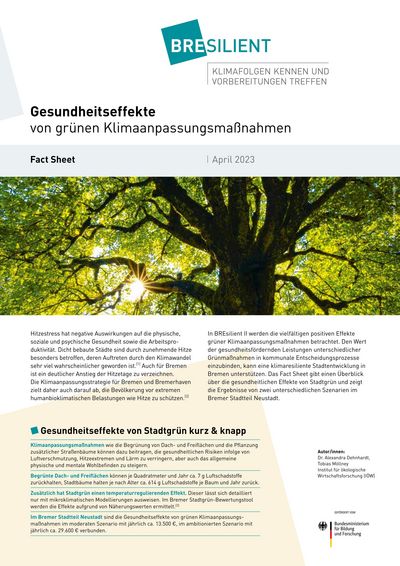Health effects of green climate adaption measures
Green climate adaptation measures such as the planting of street trees and the greening of roofs and open spaces can make important contributions to a healthier living environment for city dwellers. For example, urban green reduces air pollution and mitigates heat extremes. In addition, green spaces can also increase general physical and mental well-being by providing spaces for meeting and recreation.
The value of these and other services is demonstrated by the Bremen Urban Green Valuation Tool, which was developed as part of the BREsilient project: For each district of Bremen, users can evaluate the regulating and cultural ecosystem services of green climate adaptation measures in freely adjustable scenarios.
This fact sheet focuses on the health-relevant effects of Bremen's urban green and explains how the ecosystem services "air pollutant retention" and "temperature regulation" are implemented in the tool. For the district of Neustadt, these effects are exemplified in their spatial distribution and overall impact, both in physical units and monetarily valued, for two scenarios differing in ambition. For example, annual air pollutant reductions ranging from 323 kg in the moderate to 730 kg in the ambitious scenario result in up to 18,000 € in avoided health costs and other damages.



